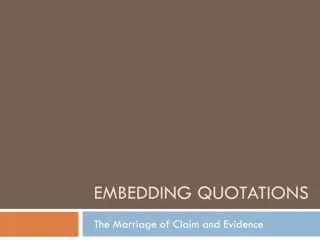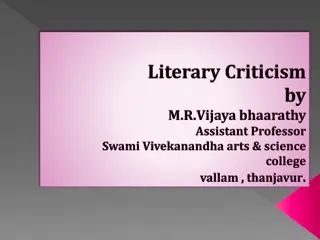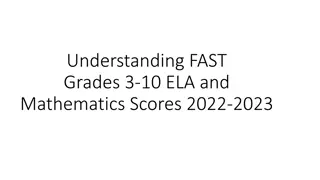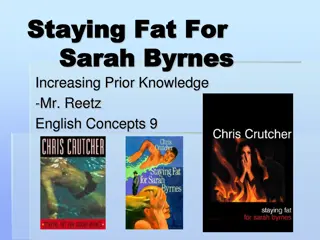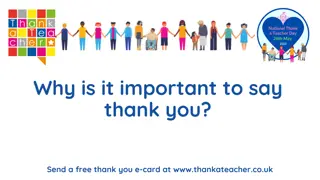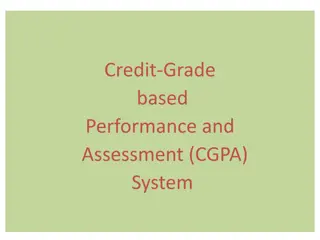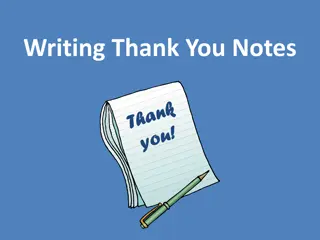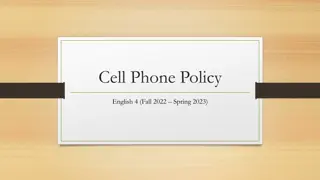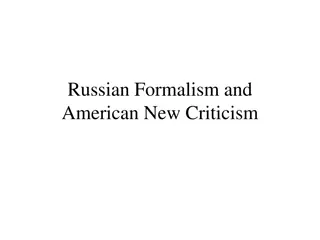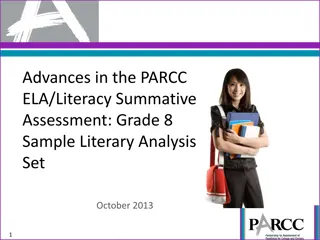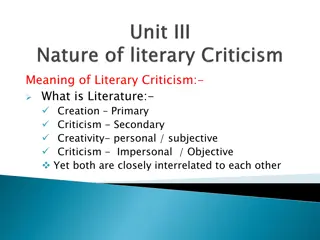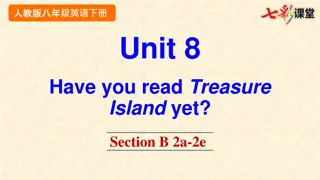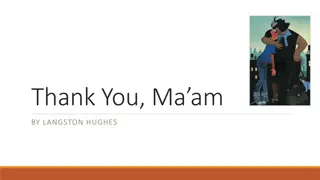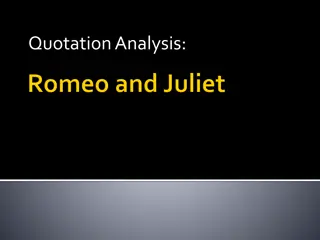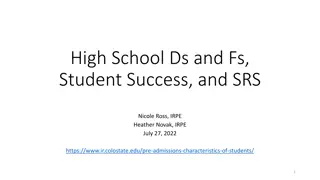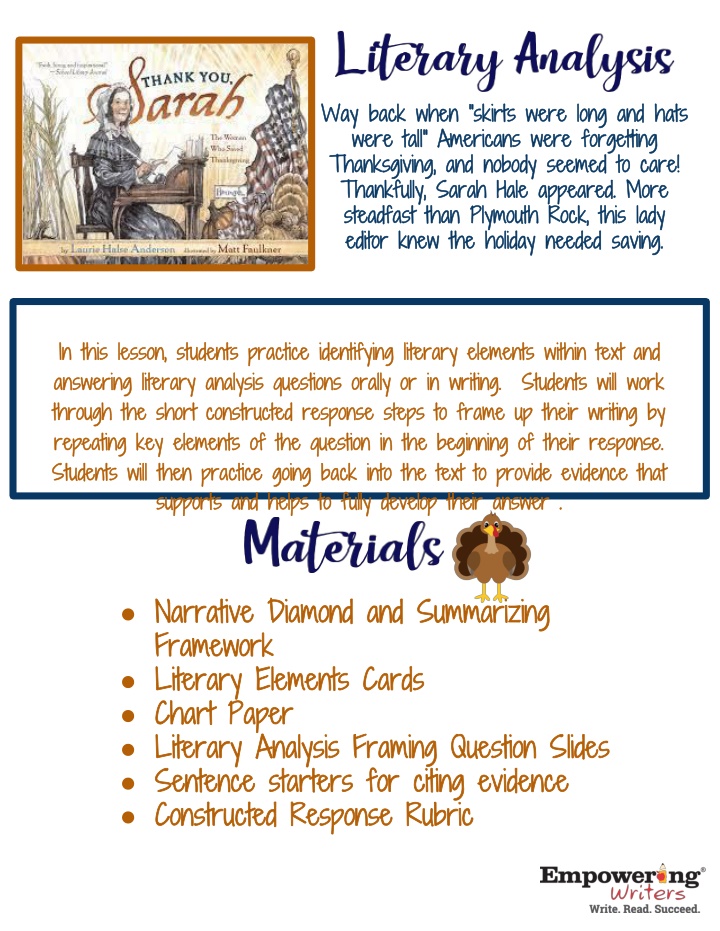
Literary Elements Practice and Analysis Lesson for Students
Engage students in identifying literary elements by exploring the story "Thank You, Sarah Anderson". Follow a structured approach using constructed responses, evidence citing, and summarizing techniques. Enhance literary analysis skills with practice and guidance.
Download Presentation

Please find below an Image/Link to download the presentation.
The content on the website is provided AS IS for your information and personal use only. It may not be sold, licensed, or shared on other websites without obtaining consent from the author. If you encounter any issues during the download, it is possible that the publisher has removed the file from their server.
You are allowed to download the files provided on this website for personal or commercial use, subject to the condition that they are used lawfully. All files are the property of their respective owners.
The content on the website is provided AS IS for your information and personal use only. It may not be sold, licensed, or shared on other websites without obtaining consent from the author.
E N D
Presentation Transcript
Way back when "skirts were long and hats Way back when "skirts were long and hats were tall" Americans were forgetting were tall" Americans were forgetting Thanksgiving, and nobody seemed to care! Thanksgiving, and nobody seemed to care! Thankfully, Sarah Hale appeared. More Thankfully, Sarah Hale appeared. More steadfast than Plymouth Rock, this lady steadfast than Plymouth Rock, this lady editor knew the holiday needed saving. editor knew the holiday needed saving. In this lesson, students practice identifying literary elements within text and In this lesson, students practice identifying literary elements within text and answering literary analysis questions orally or in writing. Students will work answering literary analysis questions orally or in writing. Students will work through the short constructed response steps to frame up their writing by through the short constructed response steps to frame up their writing by repeating key elements of the question in the beginning of their response. repeating key elements of the question in the beginning of their response. Students will then practice going back into the text to provide evidence that Students will then practice going back into the text to provide evidence that supports and helps to fully develop their answer . supports and helps to fully develop their answer . Narrative Diamond and Summarizing Narrative Diamond and Summarizing Framework Framework Literary Elements Cards Literary Elements Cards Chart Paper Chart Paper Literary Analysis Framing Question Slides Literary Analysis Framing Question Slides Sentence starters for citing evidence Sentence starters for citing evidence Constructed Response Rubric Constructed Response Rubric
In this lesson, students practice identifying literary elements In this lesson, students practice identifying literary elements within text. within text. Read aloud the book Thank You, Sarah Anderson. Thank You, Sarah by Laurie Halse After reading the story, write the summary using the Narrative Summarizing Framework. Make sure to bring attention to the Narrative Diamond and the organization of story elements within. Introduce the Literary Elements cards. Discuss orally or have students work in groups to talk through each of the building blocks of story for this book. Frame up complete sentences using sentence starters. Chart student responses. Thank You, Sarah Written by: Laurie Halse Anderson Illustrated by: Matt Faulkner Read by: Patti Smith *A video link is provided if you do not have a copy of this book.
Students will work through the short constructed response steps to frame up Students will work through the short constructed response steps to frame up their oral or written responses by repeating key elements of the question in the their oral or written responses by repeating key elements of the question in the beginning of their response. Students will then practice going back into the text to beginning of their response. Students will then practice going back into the text to provide evidence that supports and fully elaborates their answer. provide evidence that supports and fully elaborates their answer. Briefly, retell the story Thank You, Sarah Thank You, Sarah by Laurie Halse Anderson. Model the process when constructing a response to a literary text whole group. Analyze the prompt for givens and variables. Go back into the text looking for the specific literary element in question. Locate the paragraph where you will find the information needed. Identify the evidence from the text to support your thinking. Write a main idea sentence - Turn the question into the response. Compose the body of the paragraph - paraphrase, sentence starters, cite evidence, word referents, flip the sentence subject, transitional words and phrases. Wrap it up with a conclusion statement using a definitive word or phrase and restatement of the main idea statement.. Choose which literary analysis questions you will use for your class, depending on the number of days you would like to spend on the lesson. Repeat this process for each of them. Scaffold the lesson where appropriate to ensure student success. Ex- model whole class with students guiding you, have students work in small groups, pairs, and then individually when ready.
In the story, Thank You, Sarah, what is the main characters motivation? (What does the main character want?) Find examples from the text that support your answer.
In the story, Thank You, Sarah, what is the main characters conflict? (Who or what stands in the way of the main character s motivation?) Find examples from the text that support your answer.
In the story, Thank You, Sarah, the author reveals several character traits that Sarah Hale displayed through her actions and feelings. Choose the one trait that you feel describes her the most. Use evidence from the story to support your choice.
In the story, Thank You, Sarah, what is the theme, and how is it demonstrated? Find examples from the text that support your answer.
In the story, Thank You, Sarah, the author uses idioms throughout the book to add humor and express how the characters are feeling. Choose one example from the text where this type of figurative language is used, and explain how the author helped you to understand what it meant.



